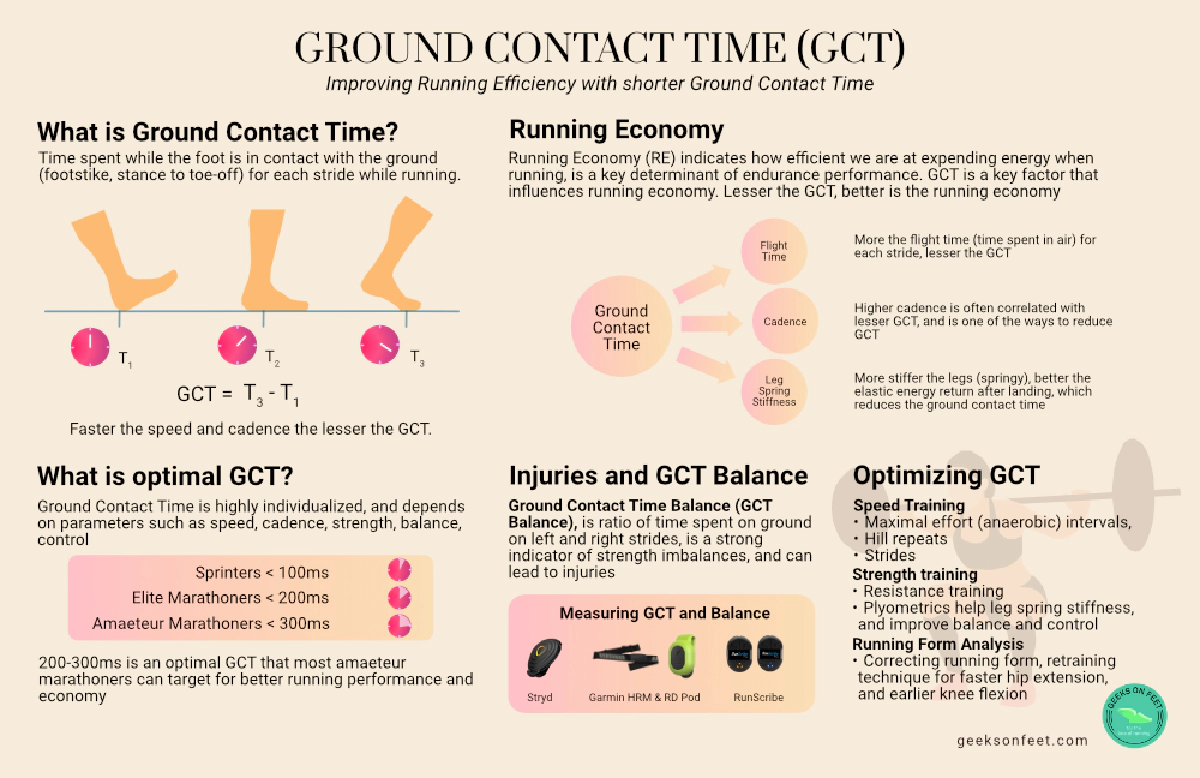
[Download high resolution graphic] (./../../img/2020/12/ground-contact-time-hd.png)
Running Economy (RE) indicates how efficient we are at expending energy when running, is a key determinant of endurance performance. GCT is a key factor that influences running economy. Lesser the GCT, better is the running economy.
GCT is related to other indicators which are often referred as Running Dynamics.
Ground Contact Time is highly individualized, and depends on parameters such as speed, cadence, strength, balance, and control. Based on the speed and pace of running, the optimal ranges for GCT are as below.
Ground Contact Time Balance (GCT Balance), is the ratio of time spent on ground on left and right strides, is a strong indicator of strength imbalances. The more skewed the GCT ratio is more the probability of injuries. Tracking and working on GCT balance is important to prevent injuries.
GCT and GCT balance can be measured using devices such as Stryd, Garmin HRM Tri, HRM Dual, RD Pod, RunScribe etc.,
Speed Training
Strength Training
Running Form Analysis
Compiled by Team GeeksOnFeet for the love of running!
If you are a running enthusiast, follow us on our social media channels @geeksonfeet on Twitter, and GeeksOnFeet on Instagram and Facebook for updates. Also let us know what running topics you would like to read on.